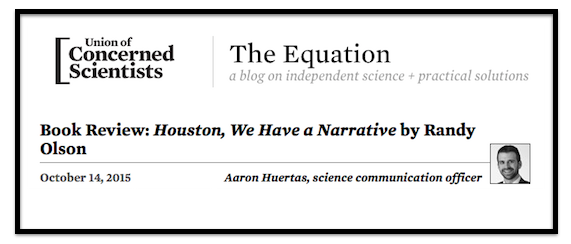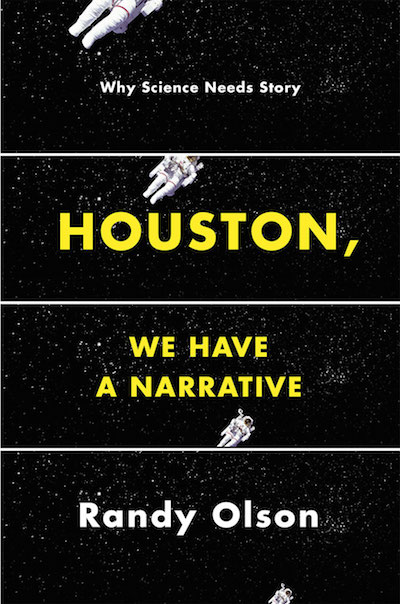My new book has a section titled “The ABT Way of Thinking,” but a simpler term for this is just “The ABT Framework.” When you get to know the ABT structure, you begin to see it all around you. It’s in the narrative structure of stories in the news, it’s present in written communication, literature, history, business — basically everywhere. This is part of the message of the book, which we’ll now start to compile at #ABTFramework.

SCIENCE INNOVATES AS FAST AS SENIOR CITIZENS CHANGE FASHIONS. You want evidence of how slow things change in science? This is the first figure from my new book. It shows how long it took the four top medical journals to adopt the narrative template of IMRAD (Introduction, Methods, Results And Discussion). Today they all use it, but it took FIFTY YEARS … a half century … for them to fully adopt it. Change in science happens sloooooooowwwwww.
THE ABT HISTORY
Next month will make four years since I heard Trey Parker describe his “
Rule of Replacing” in which he told about the simple editing principle they use. He was talking about the idea of replacing “and’s” with “but’s” and “therefore’s.”
Within a couple weeks I molded it into a single sentence template — one sentence built around the words, “and, but, therefore” which we now call “The ABT.” In 2013 I gave a
TEDMED talk on it, then had a letter in
Science Magazine about it.
In my new book, “
Houston, We Have A Narrative,” I run through a number of examples of putting the ABT to work in the real world such as helping panelists on a sea level rise panel, working with the AAAS-Lemelson Invention Ambassadors, and assisting an ocean scientist on her presentation. Since writing those accounts, there are heaps more examples coming in every day.
THE ABT HALL OF FAME
There are about a dozen “early adopters” of the ABT who have been a big help to me. These are people who took one look at it and said, “I get it,” then set to work using it and propagating it. Are they communications heroes? Not really, given how simple and common sense the ABT is. They are just people who don’t care about “where did this come from” — they figure if it works, they’ll use it.
People like
Park Howell who teaches storytelling to MBAs in the business school at Arizona State University. He not only “got it” a couple years ago, he’s the guy who pointed me to the Gettysburg Address and labeled the ABT “the DNA of story.”
And
Shirley Malcom, head of Education at the American Association for the Advancement of Science, as well as this year’s winner of the prestigious
UCLA Medal. Shirley got the ABT at first glance. She’s brought me in to work with a number of groups of speakers at AAAS and watched as the ABT has helped them find the narrative of what they have to say.
And
Peter Griffith of NASA. He, too, grasped the power of the ABT the first time he heard about it. In February he had me speak on a panel at the North American Carbon Meeting which he co-organized. I presented the ABT, the next day a number of scientists used it in their talks — some even bolding the words “And, But, Therefore.”
And
Jayde Lovell who has been my co-producer of Story Circles. This spring she applied for and was chosen as one of the twelve finalists out of nearly 2,000 submissions for the National Academy of Engineering’s “Next MacGyver” contest. Her entire pitch was structured using the ABT, as was her live presentation in Hollywood which resulted in her winning one of the five slots which paid a cash prize and has her now working with folks in Hollywood on the TV pilot of her pitch.
And
Mike Strauss who is head of the Office of Scientific Quality Review at the U.S. Department of Agriculture. He is in charge of overseeing quality control of research proposals. He immediately saw the value of the ABT to the construction of good proposals. After having me speak at their annual convention, he sponsored one of our Story Circle prototypes, then a workshop with 75 plant pathologists, and now two more Story Circles launching next month with plans for lots more within USDA.
There’s countless more. In fact, just this week a scientist who is part of a 20 member group putting together a statement for the Paris climate meeting showed me how the ABT was the magic tool that enabled them to come up with a summary statement that is clear, cohesive and delivers a solid punch. He said with that one tool they went from “herding cats” to unity.
Every day these stories now roll in, as well as people telling me about the latest “And, And, And,” presentation they got stuck in. Lots more ahead for the ABT. It’s just a matter of time. There is no alternative narrative model. It’s just the way that narrative has worked since 4,000 years ago when someone carved the story of Gilgamesh on cuneiform tablets in Mesopotamia. It’s not a surprise it is the narrative magic bullet the science world, and pretty much everyone else, needs.
You can follow everything related to the ABT at the new hashtag,
#ABTFramework.






